 |
All About Cownose Rays |
 |
Make a Day Trip to Holbox in July or August to Try to Spot These Amazing Cownose Rays!
| Cownose Ray Migration Near Yucatan Peninsula |
Looking like giant leaves floating in the sea thousands of beautiful golden colored Cownose rays are seen here above gathering off the coast of the Yucatan Peninsula in Mexico. The spectacular scene was captured in August 2008 near Holbox Island, Mexico as the magnificent creatures made one of their biannual mass migrations to more agreeable waters.
Gliding silently beneath the waves they turned vast areas of blue water to gold off the northern tip of the Yucatan Peninsula near Isla Holbox. Sandra Critelli, an amateur photographer, stumbled across the phenomenon while looking for whale sharks.
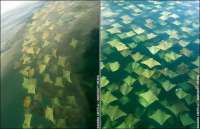 She said: 'It was an unreal image, very difficult to describe. The surface of the water was covered by warm
and different shades of gold and looked like a bed of autumn leaves gently moved by the wind. She said: 'It was an unreal image, very difficult to describe. The surface of the water was covered by warm
and different shades of gold and looked like a bed of autumn leaves gently moved by the wind.
'It's hard to say exactly how many there were but in the range of a few thousand." Sandra said.
'We were surrounded by them without seeing the edge of the school and we could see many under the water surface too. I feel very fortunate I was there in the right place at the right time to experienced nature at its best."
Measuring up to 7ft (2.1 meters) from wing-tip to wing-tip, Golden rays are also more prosaically known as cow nose or cowfish rays. They have long, pointed pectoral fins that separate into two lobes in front of their high-domed heads and give them a cow-like appearance. Despite having poisonous stingers they are known to be shy and non-threatening when in large schools.
The population in the Gulf of Mexico migrates, in schools of as many as 10,000, clockwise from western Florida to the Yucatan .
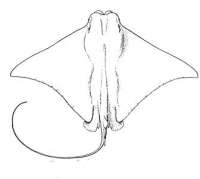 Order: Rajiformes Order: Rajiformes
Family: Rhinopteridae
Genus: Rhinoptera
Species: bonasus
The cownose ray was first named Raja bonasus (Mitchill, 1815). This name was changed to the currently valid name Rhinoptera bonasus that same year. The genus name is derived from the Greek "rhinos" meaning nose and "pteron" meaning wing. The species name bonasus is from the Greek "bonasos" meaning bison. Synonyms include Rhinoptera lalandi (Muller and Henle, 1841) and Rhinoptera affinis (Bleeker, 1863) along with a misidentification as Rhinoptera javanica (non Muller and Henle, 1841).
Names
English language common names include cowfish, cownose ray, and skeete. Other common names are cara de vaca (Spanish), chucho (Spanish), echte koeneusrog (Dutch), gavilan mancha/manchado (Spanish), kurogane-ushibana-tobi-ei (Japanese), lehmrausku (Finnish), mancha (Spanish), manta (Spanish), mourine amricaine (French), raia-focinho-de-vaca (Portuguese), raia-sapo (Portuguese), raya gaviln (Spanish), ray sparrowhawk (Spanish), spot (Spanish), and ticonha (Portuguese).
| Geographical Distribution |
The distribution of the cownose ray includes the eastern Atlantic Ocean including Mauritania, Senegal, and Guinea. They are also located in the western Atlantic from southern New England to northern Florida (USA) and throughout the Gulf of Mexico, migrating to Trinidad, Venezuela, and Brazil.
This pelagic species is also sometimes found in inshore waters. For the most part, this species is known for its migrations to different parts of the ocean (oceanodromous). The environments in which they are found include brackish and marine habitats. They are found at depths to 72 feet (22 m). They are gregarious and make long migrations. The cownose ray population is believed to be increasing in numbers. The migration patterns, in the Atlantic, include a northward movement in the late spring and southward movements in the late fall. Southbound migration has been observed to contain larger schools than the northbound migration. Smith and Merriner (1987) believe that the changes in water temperature, coupled with sun orientation, may initiate seasonal mass migration.
They also suggest that the southward migration might be influenced by solar orientation while the northward migration might be influenced by water temperature cooling below 22 C, but further studies are needed to confirm this. The migratory congregation, thus far, has not been linked to feeding or premigratory mating activity.
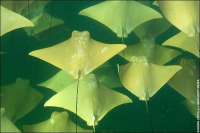 Distinctive Features This ray is set apart from all of its relatives by the indented anterior contour of its cartilaginous skull (chondrocranium), with the conspicuously bilobed subrostral fin. The exception to this is the ticon cownose ray (Rhinoptera brasiliensis), which so closely resembles R. bonasus in both appearance and bodily proportions, that they can only be differentiated by their number of teeth. Normally, R. bonasus has only seven series in each jaw while the ticon cownose ray has nine. Distinctive Features This ray is set apart from all of its relatives by the indented anterior contour of its cartilaginous skull (chondrocranium), with the conspicuously bilobed subrostral fin. The exception to this is the ticon cownose ray (Rhinoptera brasiliensis), which so closely resembles R. bonasus in both appearance and bodily proportions, that they can only be differentiated by their number of teeth. Normally, R. bonasus has only seven series in each jaw while the ticon cownose ray has nine.
The disc is approximately 1.7 times as broad as it is long. The eyes and the spiracles of the cownose ray are located on the sides of their broad head. The main portions of the pectorals arise from the sides of the head, close behind and below the eyes. The outer corners of the pectorals are pointed and become concave toward their posterior margins. The dorsal fin originates approximately opposite the rear ends of the bases of the pelvic fins and is rounded above. The tail, round to oval in cross-section, is moderately stout near the anterior spine, and narrows rearward, tapering to a lash-like tip. The length of the tail, measured from the center of the cloaca, is about twice as long as the body, measured from the cloaca to the front of the head, but can be three times as long on small specimens. There are one or two tail spines. The first spine (posterior spine) is located directly behind the base of the dorsal fin. If present, the second spine (anterior spine) has a free portion that is about half as long as the anterior margin of the pelvic fin. The anterior spine varies in length from very short (tip hardly emerges from skin) to as long as the posterior spine. The spines contain marginal teeth with broad bases and sharp tips that curve rearward at a 45 degree angle. The number of teeth ranges from 22 to 45. The spine processes toxins and mucous into its ventral grooves, which is produced from spongy venom glands located along the underside of the spine.
The dorsal surface of the cownose ray is light to dark brown, and can sometimes have a yellowish tint. The ventral surface is white or yellowish white with the outer corners of the pectorals being more or less brownish. Some specimens are marked above and below with many narrow obscure dark lines or bands that radiated outward from the center of the disc. Tail coloration generally follows that of the body.
There are usually 7 series of teeth, on the dental plate, in each jaw that contain up to 11 to 13 rows exposed and functioning simultaneously. The edges of the teeth vary with the median five series being hexagonal, the outermost series being pentagonal, and the supernumerary series being tetragonal.
Skin, apart from the tail spines, is smooth at all ages
, Age & Growth
The disc width at birth is about 14 inches (36 cm). There seems to be a considerable variation in the size when maturity is reached, which is independent from geographical influence. A male from the North Carolina waters measured only 26-28 inches (66-71 cm) wide with testes enlarged, whereas a Brazilian male measured 31 inches (79 cm) having the claspers only reach about halfway along the inner margins of the pelvic fins. A female containing embryos measured 24 inches (61 cm). The maximum size that this species ordinarily grows is debated but a disc width of 84 inches (213 cm, male/unsexed) has been recorded.
Habits
The diet of the cownose ray population in the Chesapeake Bay, Virginia consists primarily of bivalve mollusks. They eat the mollusks by crushing the shells between their terrazo-like tooth plates. Through examination of the cownose rays stomachs and spiral valves, there were large quantities of crushed valves of thin-shelled bivalves, small to moderate amounts of bivalves with intermediate thickness, and only a few small valve fragments of the thick-shelled. It has been suggested that the buccal papillae are instrumental in sorting the shell fragments from the shellfish meats. It has been proposed that cownose rays use a very specific mechanism to obtain deep-burrowing prey. They locate food on the bottom substrate (benthos) through mechano- or electroreceptive detection. Once they suspect prey is there, they employ a combination of stirring motions of the pectorals while sucking/venting both water and sediment out through the gills and away from the area to create a central steep-sided cavity depression. The continued movement of the pectoral fins aids in dispersing the sediments released from the gills and increases the depth of the depression. Eventually, the food is seized and drawn into the mouth. Common prey items include nekton, zoobenthos, finfish, benthos crustaceans, mollusks, bony fish, crabs, lobsters, bivalves, and gastropods.
The breeding period is considered to be June through October. According to observations in July of 2000 by biologists from the NMFS Apex Predators Program, a large school of cownose rays of varying ages and sexes was spotted in the shallows of Delaware Bay. A female cownose ray was seen swimming with the edges of her pectoral fins sticking out of the water. Upon closer observations, up to 6 male cownose rays were following her, trying to grasp the pectoral fins to mate. Occassionally, there would be major splashing as the males tried jumping out of the water to grasp the pectoral fins with their mouths. It is thought that the female's having the pectoral fins out of the water might be mate avoidance behavior.
The exact gestation period is not currently known for the cownose ray. The gestation period is believed to be 11-12 months, although some evidence suggests that cownose rays might have two gestation periods lasting 5-6 months. Development is ovoviviparous, producing eggs that develop within the maternal body and hatch within. The embryos lose the shell capsule in early August. Studies have shown that by the third quarter term, the embryos are upright in the uterus with the rostrum facing forward, pectoral fins folded dorsally, and the tail with the heavily sheathed spine is bent forward along the dorsal side of the disc. The initial nutrition provided to the embryos is from the yolk, which gradually diminishes between August and October. After October, histotroph, a viscid yellowish secretion from the uterus, provides the remaining nutrition. It is assumed that the embryos receive this through the mouth, spiracles, and gill slits.
It is suspected that only one cownose ray embryo is carried to full term but six embryos have been found to make it to full term in one female. Following parturation, females will typically ovulate.
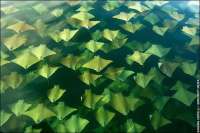 Some of the predators that are known to prey on cownose ray include cobia (Rachycentron canadum), sandbar shark (Carcharhinus plumbeus), and bull shark (Carcharhinus leucas). Some of the predators that are known to prey on cownose ray include cobia (Rachycentron canadum), sandbar shark (Carcharhinus plumbeus), and bull shark (Carcharhinus leucas).
Common bacteria found in cownose ray include Shigella sp. (in intestine) and Serratia liquefaciens (on teeth). Shigella sp. causes inflammatory dysentary (Shigellosis). It is believed that Serratia liquefaciens may be an opportunistic pathogen in this species but has been found to be pathogenic to some salmon and Arctic Char.
Cestodes (tapeworms) have been found in cownose rays. Most of these cestodes infect the spiral valve of the cownose ray. The most commonly found cestodes include Rhinoptericola megacantha, Dioecotaenia campbelli, Rhodobothrium paucitesticulare, Eiweria southwelli, and Tylocephalum sp.
Benedenella posterocolpa, a monogenetic trematode, has been found on the ventral surface of cownose rays. These trematodes will typically fall off in salinities 28 0/00 or higher.
to Humans
There has been concern about the increasing population size of cownose rays due to their high predation of oyster beds. The oyster population has been decreasing due to diseases and pollution reducing their grass bed habitat. It is thought that the cownose ray's high predation of oyster beds could further complicate the problem of declining oyster populations.
The Virginia Sea Grant Marine Advisory Program has considered solving this problem by proposing commercial fishing of cownose rays. Commercial fishing of this species has not yet been established because of many possible problems associated with it. There is currently no market for cownose rays even though participants in a taste test liked the cownose ray meat. The harvesting and processing of these rays is quite difficult, which could result in the meat being too expensive to sell. They are also vulnerable to overfishing since they mature relatively late and have low levels of reproduction. Cownose rays may be the cause of some problems, but they are also an important part of the ecosystem.
to Humans
The cownose ray differs from other ray species in that it rarely rests on the bottom, minimizing the chance that someone might step on the spine. The potential of being hurt from this ray flicking its tail is minimal since the spine is located on the tail close to the ray's body.
Shigella may be acquired from eating cownose ray meat that has been contaminated with this bacteria. This bacteria causes shigellosis that results in dysentery, which include the symptoms of diarrhea, pain, fever, and possible dehydration.
According to the International Union for Conservation of Nature and Natural Resources (IUCN), the cownose ray is listed as "Near Threatened". The IUCN consists of a global union of state, governmental agencies, and non-governmental organizations in partnership whos goal is to assess the conservation status of different species.
Prepared by:
Kimberly Kittle
Florida Museum of Natural History
PLEASE OBSERVE ALL CONSERVATION REGULATIONS STIPULATED WHILE INTERACTING WITH WILDLIFE!!
|
|
Want Up Close with Nature & Sea Life? Try these Activities!!
|
|
|
 Cozumel Dolphin Royal Swim Cozumel Dolphin Royal Swim |
If "Action" and "Speed" are what you seek in excursions then the Royal Swim is for you! Action and Speed pretty much describe this popular dolphin program! Get a handshake, a kiss and then you give them one. Feel the strength of your new friends as they push you across the water from the bottom of your feet in the thrilling foot-push. It is "the experience of a lifetime!"
US $159 Adults / US $89 Kids / Infants FREE!
|
 |
 Atlantis Submarines Cozumel Adventure Atlantis Submarines Cozumel Adventure |
Don't even get wet but dive to depths of 100 feet in a REAL submarine piloted by a professional and licensed crew and experience why Cozumel remains one of the top dive destinations in the world.
US $105 Adults / US $65 Kids
|
 |
 Cancun - Rio Secreto Expedition Cancun - Rio Secreto Expedition |
Dare to live a fantastic experience in one of the most incredible locations in the Riviera Maya that begins in the moment you arrive at the Natural Reserve.
US$ 109.00 Adults / US$ 54.50 Kids
|
 |
 Cancun - Whale Shark Adventure Cancun - Whale Shark Adventure |
Enjoy an adventure tour getting to observe and swim or snorkel besides the biggest fish in the world: the impressive whale shark!
USD$ 195.00 Adults /US$ 136.50 Kids
|
 |
 Cozumel Dive Paradise Dive Trips Cozumel Dive Paradise Dive Trips |
Experience the thrill of scuba diving in one of the top dive destinations in the world with Cozumel's leading dive shop ~ Dive Paradise!
Per Person US $35 (1 Tank) to US $79 (2 Tanks)
|
 |
 Costa Maya - Dolphin Encounter Costa Maya - Dolphin Encounter |
Enjoy a learning and interactive experience fun for all ages! A great way to introduce young and old to the wonders of dolphins and sea life!
US$ 79.00 Adults / US$ 69.00 Kids
|
 |
 Costa Maya - Dolphin Swim Adventure Costa Maya - Dolphin Swim Adventure |
Enjoy a learning and interactive experience fun for all ages! A great way to introduce young and old to the wonders of dolphins and sea life!
US$ 109.00 Adults / US$ 99.00 Kids
|
 |
 Dreams Puerto Aventuras - Dolphin Encounter Dreams Puerto Aventuras - Dolphin Encounter |
Dolphin Dreams is a privileged location which was designed to provide an exclusive experience for dolphin lovers. Different from the rest of the dolphinariums, this is the first one (1) in Quintana Roo to have kayaks within the activities with dolphins. The Encounter program is focused on creating activities that everybody can enjoy as the handshake, receiving a tender kiss or giving a soft hug to these incredible creatures. These activity along the kayaks, will make of this day a unique experience.
US$ 99.00 Adults / US$ 89.00 Kids
|
 |
 Isla Mujeres - Dolphin Swim Adventure Isla Mujeres - Dolphin Swim Adventure |
If swimming with dolphins is one of your greatest dreams, now is the time to make it real in the crystal clear waters of the Caribbean Sea. The Dolphin Swim Adventure program in Isla Mujeres -20 minute boat ride from Cancun- will bring you as close to the dolphins as you ever imagined.
You will immerse yourself in their world through a snorkeling mask and you will discover the special bond between you and them. They will kiss you, sing for you, and take you for a ride on their belly.
Our Beach Club is located in a totally natural environment, in the beautiful Isla Mujeres, enjoy delicious food, open bar and chill out!
US$ 139.00 Adults / US $89.00 Kids
|
 |
 Isla Mujeres - Royal Garrafon + Dolphin Swim Adventure Isla Mujeres - Royal Garrafon + Dolphin Swim Adventure |
Transportation from your hotel is included. Companions are required to pay additional $15 USD for transportation at check in.Request your transportation by email to customercare@dolphindiscovery.com or by phone 24 hours before the program
15 min Briefing and 50 min in the water.
Round trip Cancun - Isla Mujeres - Cancun, departing from Marina Aquatours.
Continental breakfast, national open bar and lunch buffet at Garrafon Reef Park.
This swim with dolphins program includes the famous Belly ride, Handshake, Hugs and kisses.
Snorkel equipment, life jackets, kayaks, hammocks, pool, and showers.
Lockers.
Zip Line
US$ 159.00 Adults / US$ 99.00 Kids
|
 |
 Isla Mujeres - Royal Swim VIP Plus Isla Mujeres - Royal Swim VIP Plus |
Live one day at the Mexican Caribbean full of adventure and close to dolphins, sea lions and manatees in a program where you will be able to meet and interact with these cute marine mammals. The Sea Life Discovery Plus program includes the same "action" and "speed" with dolphins of the Dolphin Royal Swim; however, activities with other amazing species are also included.
Dolphins will give you a handshake, kisses and will pull you with their dorsal tows to give you a speed ride! After that, the dolphins will push your feet to raise you up the water surface, you will feel like flying!
You will also meet our manatees and sea lions, you will learn about their diet, you will feed them, stroke them and they will give you a kiss back. Later, you will be able to meet the amazing stingrays and sharks! Our Beach Club is located in a totally natural environment, in the beautiful Isla Mujeres, an island only 40 minutes boat ride from Cancun. Enjoy delicious food, open bar and chill out!
* Kids and infants must swim with a paying adult as a companion.
US$ 199.00 Adults / US$ 99.00 Kids
|
 |
 Playa del Carmen - Dolphin Encounter Playa del Carmen - Dolphin Encounter |
You and your children will be able to enjoy safe and fun activities that Dolphin Discovery Maroma has especially designed for all ages. The Dolphin Encounter Program is filled with informative and fun facts about the dolphins; you will learn everything about them in their own natural environment. This is the best program for kids as it is the ideal activity to introduce them to nature and respect for animals.
US$ 99.00 Adults / US$ 89.00 Kids
|
 |
 Riviera Maya - Dolphin Encounter Riviera Maya - Dolphin Encounter |
Enjoy a learning and interactive experience fun for all ages! A great way to introduce young and old to the wonders of dolphins and sea life!
US$ 99.00 Adults / US$ 89.00 Kids
|
 |
 Riviera Maya - Hidden Worlds Ultimate Adventure Riviera Maya - Hidden Worlds Ultimate Adventure |
Incredible package tour for extreme and safe adventures.
US$ 89.00 Adults / US$ 69.00 Kids
|
 |
 Riviera Maya - Rio Secreto Expedition Riviera Maya - Rio Secreto Expedition |
Dare to live a fantastic experience in one of the most incredible locations in the Riviera Maya!
US$ 109.00 Adults / US$ 54.50 Kids
|
 |
 Riviera Maya - Whale Shark Adventure Riviera Maya - Whale Shark Adventure |
Enjoy an adventure tour getting to observe and swim or snorkel besides the biggest fish in the world: the impressive whale shark!
US$ 205.00 Adults / $143.50 Kids
|
 |
 Cozumel to Holbox Whale Shark Snorkel Day Trip Cozumel to Holbox Whale Shark Snorkel Day Trip |
Spectacular day trip whale shark snorkel experience with boat departing from Isla Holbox! Personal service from a professional guide who escorts guests the entire way from Isla Cozumel to Isla Holbox!
US $210 Per Person
|
 |
|
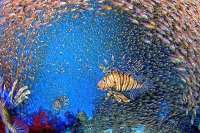
Atlantis Submarines Cozumel Adventure
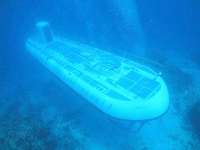
Atlantis Submarines Cozumel Adventure
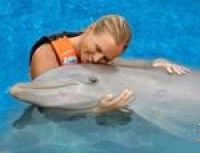
Isla Mujeres - Royal Garrafon + Dolphin Swim Adventure
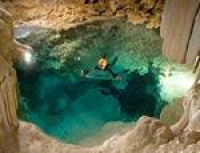
Riviera Maya - Rio Secreto Expedition
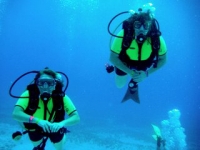
Cozumel Dive Paradise Dive Trips

Atlantis Submarines Cozumel Adventure
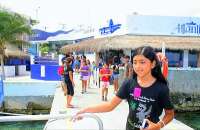
Atlantis Submarines Cozumel Adventure
|
|
 |
 |
|



















